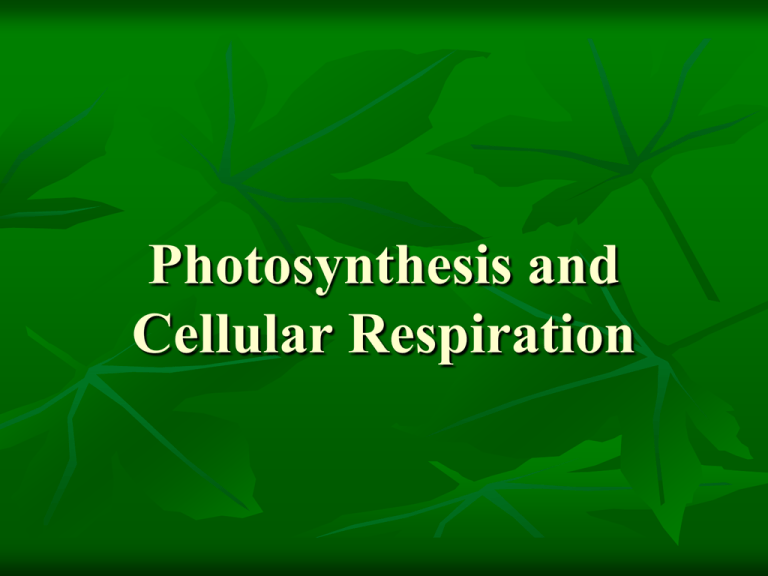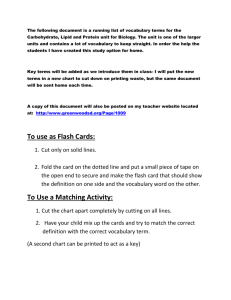Photosynthesis and Cell Respiration Notes
advertisement

Photosynthesis and Cellular Respiration Photosynthesis Photosynthesis takes place in specialized structures inside plant cells called chloroplasts – Light absorbing pigment molecules e.g. chlorophyll Overall Reaction 6CO2 + 12 H2O + light energy → C6H12O6 + 6O2+ 6H2O Carbohydrate made is glucose Water appears on both sides because 12 H2O molecules are required and 6 new H2O molecules are made Water is split as a source of electrons from hydrogen atoms releasing O2 as a byproduct Electrons increase potential energy when moved from water to sugar therefore energy is required Two Parts of Photosynthesis 4 1.Light Reaction or Light Dependent Reaction Produces energy from solar power (photons) in the form of ATP and NADPH. SUN Splits waterreleases O2 Two Parts of Photosynthesis 2. Calvin Cycle or Light Independent Reaction Takes CO2 and makes sugar Uses energy (ATP and NADPH) from light reactions 5 Harvesting Chemical Energy So we see how energy enters food chains (via autotrophs) we can look at how organisms use that energy to fuel their bodies. Plants and animals both use products of photosynthesis (glucose) for metabolic fuel Heterotrophs: must take in energy from outside sources, cannot make their own e.g. animals When we take in glucose (or other carbs), proteins, and fats-these foods don’t come to us the way our cells can use them Cellular Respiration- getting energy from food in form of ATP Cellular Respiration Overview Sugar from food is transformed into ATP These reactions proceed the same way in plants and animals Overall Reaction: C6H12O6 + 6O2 → 6CO2 + 6H2O +36 ATP Glucose+ oxygen carbon dioxide+water+ATP 1.Glycolysis Glycolysis (glyco=sugar;lysis=breaking) Gain 2 ATP Who: all life on earth does it Goal: break glucose down to form two pyruvates Where: the cytoplasm Glycolysis produces two 3-carbon molecules and a net of 2 ATP and 2 NADH 2. Krebs Cycle carbon molecules are broken into CO2 Gain 2 ATP In the mitochondria 3. Electron Transport Chain High energy electrons from glycolysis and krebs turn ADP into ATP Oxygen accepts the electrons and turns into water Gain 32 ATP 1. 2. 3. 4. 5. 6. Where does cell respiration happen? What are the 3 steps? Which step provides the most ATP? What step do you need oxygen for? When do you make CO2? How is it related to photosynthesis?





